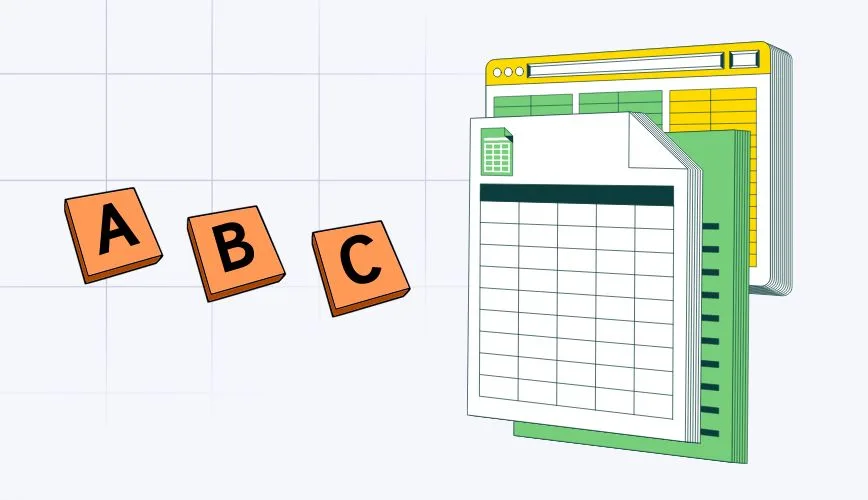The pandemic highlighted the importance of online sales channels, prompting businesses to swiftly adapt to a new reality. Today, the e-commerce industry continues to grow, with experts forecasting further expansion over the next five years. According to Statista, global e-commerce revenue is expected to reach US$4,117 billion in 2024 and continue to grow at a steady 9.49% annual growth rate (CAGR), reaching US$6,478 billion by 2029.
The growth of online retail results in more ecommerce stores and increased competition for the discerning consumer. Companies that apply deep analytics to revenue management amidst this heightened competition can effectively work through their pricing strategies, personalize offers, and accurately forecast demand. A data-driven approach allows retailers to make informed decisions that will fuel revenue growth and strengthen their market standing.
In this article, we explore the main revenue management strategies in e-commerce, discuss effective tools for achieving profitability, and showcase examples of their successful implementation.
Contents:
What Is a Revenue Management Strategy?
Key Approaches to Revenue Management
Best Practices in Revenue Management
How to Develop a Revenue Management Strategy
What Is a Revenue Management Strategy?
A revenue management strategy is a set of methods and techniques aimed at optimizing sales and maximizing revenue by setting prices strategically, managing demand, reducing costs, and efficiently controlling inventory.
In practice, revenue management involves analyzing data and making informed decisions about pricing, product assortment, marketing strategies, inventory management, and improving the customer experience.
This process may seem complex, especially in e-commerce, where numerous volatile factors must be constantly monitored such as market dynamics, competitor actions, demand fluctuations, and consumer behavior. However, the truth is that every business can control its profitability. A well-thought-out strategy considers these variables and establishes both short- and long-term goals, ensuring competitiveness and adaptability in a changing market.
Key Approaches to Revenue Management
Achieving sustainable revenue growth is a priority for the commercial department of an online store. Let’s highlight the four approaches that are most effective in driving sustainable revenue growth in e-commerce.
Dynamic Pricing
This strategy uses analytics and real-time product repricing algorithms to implement flexible pricing based on market conditions. Product prices may vary according to the following factors:
- Demand level. Prices increase during periods of high demand and decrease when demand is weak, promoting sales and optimizing inventory.
- Supply level. Price adjustments are based on changes in the quantity of goods available in the market.
- Time of day and seasonality. Prices are adjusted during different periods of the year, week, and even day. For example, higher prices can be set during peak hours or on holidays.
- Competitor prices. Competitor prices are a key factor in the battle for customers, especially when using dynamic pricing. In a dynamic pricing strategy, your store’s prices can automatically adjust in response to competitors’ price changes.
- Customer data. Purchase history, customer behavior, and demographic factors are used to set personalized prices for individuals.
According to McKinsey, dynamic pricing typically increases sales by 2% to 5% and profits by 5% to 10%. Today, many large online retailers have adopted this approach, driven by technological advancements and the ease of automating the pricing process.
Assortment Management
This approach focuses on optimizing the product assortment and effectively managing inventory. Optimizing the product assortment helps attract various customer segments, while effective inventory management prevents stock shortages or surpluses and reduces the risk of losses due to product expiration.
Assortment optimization involves creating a product matrix. This is a structured list of items offered by the online store. Evaluating product performance using historical data provides insights into which products should be stocked more or less, or removed from the assortment altogether.
Classic tools for this include ABC analysis and XYZ analysis. ABC analysis classifies products based on their importance to the business, using criteria such as sales volume, profit, turnover, and stock levels. XYZ analysis classifies products based on demand variability, helping to avoid inventory issues like shortages or surpluses.
Assortment management is a cyclical process that requires continuous adaptation to changing conditions.
Promotional Strategies
Promotions are a powerful tool for attracting customers and boosting sales. Key examples of revenue management promotional strategies include:
- Seasonal discounts and sales
- Flash sales (limited-time offers with significant discounts)
- Coupons and promo codes
- Special deals, such as buy one, get one free or 1 + 1 = 3
- Cross-promotions (discounts on related products)
- Product bundles (combining several products into one package at a favorable price)
These strategies must be carefully planned to avoid reducing profit margins.
Personalized Offers
This revenue management strategy relies on a thorough analysis of customer data, such as data on interests, preferences, and purchase history. Personalized offers include tailored promotions, product recommendations, and discounts designed for individual customers.
The following tools are effective for creating personalized offers:
- Google Analytics, data analysis platforms, and machine learning tools (such as Amazon SageMaker) for collecting and analyzing customer data
- CRM systems (Salesforce, HubSpot, Zoho CRM) for managing customer information and behavior and for automatically creating personalized promotions
- Email marketing platforms (Mailchimp) for creating personalized email campaigns based on customer interests and behavior
- Remarketing platforms (Google Ads, Facebook Ads) for tracking interactions with your website and displaying personalized ads in search engines and on social media
Creating highly personalized landing pages and tailoring ads to address key trigger points helps retailers meet customer expectations and proactively stimulate product demand.
With this approach, online stores can offer the most relevant and attractive deals to users, significantly increasing their chances of making a purchase.
Best Practices in Revenue Management
Many leading market players employ various revenue management strategies, including prominent companies like Amazon, Spotify, Apple, Uber, Pinterest, Netflix, eBay, AliExpress, and Airbnb. Let’s examine a few of these strategies in detail.
Retail giants like Amazon and Walmart use analytical tools to monitor demand and manage inventory. This allows them to efficiently allocate resources, reduce storage costs, and increase customer satisfaction by ensuring the availability of the most popular products.
One of the main approaches used by companies like Zara and eBay is dynamic pricing, which allows them to adjust prices in real time based on demand, seasonality, and competitor activity. This helps to maximize revenue, especially during peak seasons.
Netflix and Alibaba are known for their skills in generating personalized offers through consumer behavior data. Using machine learning algorithms, these companies deliver products and services that closely match individual interests, enhancing the conversion rate.
Target and Best Buy regularly use various promotional offers and discounts to attract new customers and boost repeat purchases. They use consumer behavior data to determine the optimal conditions for promotions, ensuring a balance between customer acquisition and profitability.
These and other widely used revenue management practices help market leaders achieve steady revenue growth and improve customer satisfaction.
Trusted by Industry Leaders
Explore Pricer24’s Price Analytics Solutions
How to Develop a Revenue Management Strategy
Building a profitable business requires a deep understanding of industry trends, customer insights, and well-defined business goals, along with relevant KPIs for marketing and sales teams. Note that there is no one-size-fits-all formula for success. Each business has its unique characteristics, so it’s crucial to concentrate on the strategies that will be most beneficial to you.
Here are the key aspects to consider when developing a revenue management strategy:
1. Analysis of Internal Company Data:
- Financial indicators: revenue, expenses, profits, profitability
- Sales data: sales volumes by product, region, and sales channel
- Historical data: analysis of sales and revenue over previous periods to identify trends
- Logistics and supply chain: transportation costs, delivery times, and stock availability
2. Customer Data Analysis:
- Customer segmentation: demographic and behavioral data, interests, and needs
- Demand analysis: which products and services are most popular among different customer segments
- Price sensitivity: how changes in product prices affect demand
3. Market and Competitive Analysis:
- Competitor analysis: market share, pricing strategies, assortment, and marketing strategies
- Market trends: overall trends, seasonal demand fluctuations, new products in the market
- Macroeconomic indicators: inflation, exchange rates, economic forecasts
Сompetitive and market analysis enable retailers to take proactive measures against competitors’ pricing strategies and market shifts, ensuring they remain competitive and their offers stay attractive to customers.
4. Competitor Pricing Analysis:
- Monitoring and comparing prices for similar products
- Price elasticity: determining how price changes affect sales volumes
- Promotional strategies: discounts, deals
5. Assortment Management:
- Product performance analysis: identifying which products generate the most revenue and have the highest demand
- Assortment optimization: removing low-margin or unpopular products and adding promising new ones
6. Market Segmentation:
- Analyzing the target audience by examining purchasing habits, motivations for choosing specific products, and spending capacity
- Identifying key customer segments with unique needs and behaviors
- Targeted offers: creating special deals and promotions for different customer segments
7. Pricing Optimization:
- Setting optimal prices that maximize revenue, considering demand elasticity and competitor prices
- Dynamic pricing: adjusting prices in real time depending on demand changes, seasonal fluctuations, and other factors
8. Marketing Strategy Development:
- Creating marketing campaigns aimed at boosting sales in specific segments
- Analyzing effectiveness: evaluating the results of marketing activities and adjusting strategies based on data
9. Inventory Management:
- Forecasting demand to predict future product needs and prevent inventory shortages or surpluses
- Optimizing the supply chain to reduce storage and transportation costs
10. Customer Experience Improvement:
- Analyzing feedback: identifying key aspects that impact customer satisfaction and loyalty
- Personalization: offering individual promotions and recommendations based on customer behavior and preferences
11. Financial Planning:
- Budgeting and forecasting: creating financial forecasts based on historical data and current trends
- Assessing risks: identifying and managing risks that may impact the company’s profitability
Pricer24: Price Analytics for Boosting Profitability
How do your product prices stack up against those of your competitors for similar items? Who offers lower or higher prices, and what should you focus on? How have your competitors’ prices evolved? Which products are currently priced below the recommended retail price? All these insights are just a click away with Pricer24. Make data-driven pricing decisions rather than relying on intuition.
Our platform offers extensive analytical capabilities. Beyond tracking and analyzing competitors’ prices, you can also assess product placement on digital shelves and conduct market analysis.
With comprehensive reports and data aggregation, you gain a clear view of the market and can swiftly identify emerging trends. Analytics deliver valuable insights that a skilled category manager can turn into increased profits.
Conclusion
Pricing and revenue management require ongoing monitoring and rapid adaptation to changes. An effective strategy helps companies maximize profits, satisfy customer needs, and stay competitive.
Modern analytical tools provide robust features that facilitate precise adjustments to strategies, supporting stable revenue growth and improved overall business efficiency. Tasks that once had to be performed manually, such as data collection, can now be automated. Even analysis and repricing can be handled semi-automatically with tools like Pricer24.
FAQ
What are the key principles behind revenue management?
There are three fundamental principles: monitoring the market, analyzing preliminary results to form effective strategies, and pricing to stimulate sales and, consequently, revenue.
How does revenue management differ from pricing management?
A pricing strategy involves setting prices while considering relevant factors to maintain a competitive market position. Revenue management involves systematic data analysis to maximize revenue.
How can you create a profit plan?
This task requires a comprehensive approach, starting with defining the core business goals. It’s also crucial to focus on customer retention strategies, especially by creating an appealing and customer-focused product or service offering.









